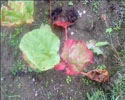
Most Prominent Ethno-Medicinal Plants Used By The Tribals Of Chhitkul, Sangla Valley
Abstract
Keywords
Full Text:
PDFReferences
Mukherjee PK, Wahile A, Integrated approach towards drug development from Ayurveda and other Indian system of Medicine. Journal of Ethnopharmacology, 2006, 103, 25-35.
Fabricant DS, Farnsworth NR, The value of plants used in traditional medicine for drug discovery. Environment Health Perspectives, 2001, 109, 69-75.
Salie F, Eagles PFK, Leng HMJ, Preliminary antimicrobial screening of four South African Asteraceae species. Journal of Ethnopharmacology, 1996, 52, 27-33.
Plotkin MJ, Famolare L, Conclusions and recommendations. In: Sustainable Harvest and Marketing of Rain Forest Products. 1st edition, Island Press, Washington, D.C. 1992, 310-313.
Balick M, Cox P, Plants, People and Culture: The Science of Ethnobotany. Scientific American Library, New York, 1996.
Cragg GM, Boyd MR, Cardellina JH, Newman DJ, Snader KM, McCloud, TG, Ethnobotany and drug discovery: the experience of the US
National Cancer Institute. Ciba Foundation Symposium, 1994, 185, 178–190.
Newman DJ, Cragg GM, Snader KM, The influence of natural products upon drug discovery. Natural Product Reports, 2000, 17, 215–234.
Gurib-Fakim A, Medicinal plants: traditions of yesterday and drugs of tomorrow. Molecular Aspects of Medicine, 2006, 27, 1-93.
Rawat DS, Kharwal AD, Traditional Health Practices By ‘Kinners’-A Tribe in Alpine and Sub-Alpine Himalayas of kinnaur (Himachal Pradesh), India. Life Sciences Leaflets, 2011, 22, 1048-1055.
Sharma PK, Lal B, Ethnobotanical notes on some medicinal and aromatic plants of Himachal Pradesh. Indian Journal of Traditional Knowledge, 2005, 4, 424-428.
Sharma PK, Sethi GS, Sharma SK, Sharma TK, Ethnomedicinal observations among the inhabitants of cold desert area of Himachal Pradesh. Indian Journal of Traditional Knowledge, 2006, 5, 358-361.
Sood SK, Nath R, Kalia DC, Ethnobotany of Cold Desert Tribes of Lahaul-Spiti (N.W. Himalaya). Deep Publishers, New Delhi, 2001.
Brijlal, Ahuja PS, Gupta AK, Application of seabuckthorn in Amchi system of medicine. In: Singh V, Khosla PK (eds), Seabuckthorn—A Resource for Health and Environment in Twenty First Century. CSK Himachal Pradesh Agricultural University, Palampur and Indian Society of Tree Scientists, Solan, 2001, 239–242.
Badoni A, Badoni K, Ethnobotanical Heritage in Garhwal Himalaya. In: Kandari OP, Gusain OP (eds), Nature, Culture and Society, Transmedia, Srinagar Garhwal, 2001.
Copyright (c) 2015 Annals of Plant Sciences

This work is licensed under a Creative Commons Attribution-NonCommercial-NoDerivatives 4.0 International License.


